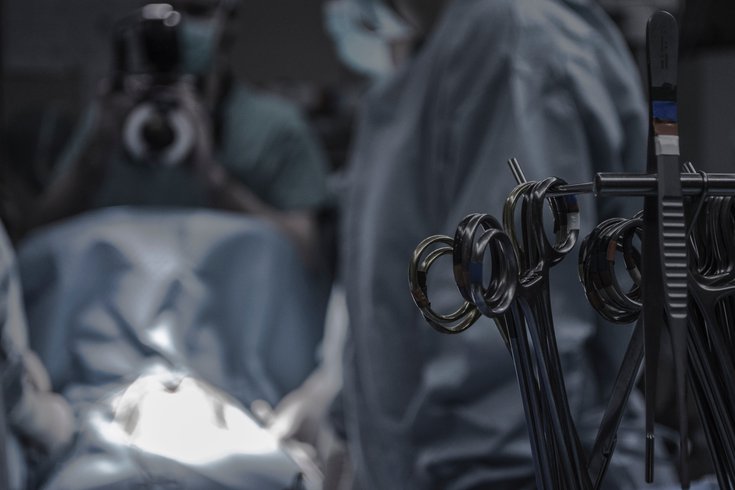
March 09, 2022
 Piron Guillaume/Unsplash
Piron Guillaume/Unsplash
Patients end up on the organ transplant waiting list for years before a viable kidney becomes available for them.
More than 100,000 people in the United States are waiting for lifesaving organ transplants. And 85% of them need a kidney, according to Donate Life America.
People can wait years before a viable kidney becomes available. Concern over this shortage recently led Dr. Ty B. Dunn and her transplant team at Penn Medicine to see whether a rare horseshoe kidney from a deceased donor could be gifted to two patients in need.
A horseshoe kidney is a congenital malformation in which the kidneys don't separate during development. Instead, they stay fused together at the lower end. It's quite rare, affecting 1 in 500 people. Because of extra tissue, blood vessels and the way the organ has to be flushed out prior to transplantation, they can be difficult to transplant.
When a horseshoe kidney became available in February, Dunn determined it was usable. She took on the challenge of splitting it and transplanting the two kidneys in two recipients willing to accept them.
"Horseshoe kidneys are notorious for having a lot of urological or vascular anomalies including multiple arteries coming off other vessels that supply the U-shape – the connector between the two kidneys," Dunn said. "Only 19% of horseshoe kidneys have standard anatomy. Often transplant surgeons will only split a horseshoe kidney when the U-shape connector is very thin."
In this case, the donated organ's connector was thick, Dunn said. The horseshoe kidney had six different arterial patterns, known as type 1a. This type only occurs in about 18% of horseshoe kidneys. That means only about 1 in 2,500 donated kidneys are this specific type.
Dunn had only seen one a handful of times.
The one she transplanted was a true horseshoe configuration. Sometimes, a horseshoe kidney can be transplanted in one person without being split, but Dunn wanted to see if she could successfully split it and make two gifts of life.
"Because of anatomical abnormalities, horseshoe kidneys are often discarded," Dunn said. "I wanted to really look at it. I wasn't sure it would work, but had to be prepared just in case it did."
There were three possible scenarios, she said. The organ could prove to be unusable, it could be viable only for a single recipient, or it could be split and shared between two patients.
After examining the kidney, Dunn realized it could be split. "We were able to do good with something that often is too complicated," she said.
Preparing the kidney involved dividing the U-shape in half and making sure it didn't leak blood or urine. She said there were no serious complications in preparing the organ or during the transplantations into the two recipients, which took place immediately afterward.
Sometimes deceased donor kidneys don't function immediately and the recipient has to be put on dialysis until it does, but that didn't happen in this case, Dunn explained.
"Both kidneys made urine immediately, which doesn't always happen with deceased kidneys," Dunn said. "It was very gratifying. I knew we were off to a great start."
Jacquelyn Schiller, 68, was one of the two patients who received the split kidney. She had been on the kidney waiting list for five years. Suffering from polycystic kidney disease, she needed to replace a transplant she had received 20 years prior.
Polycystic kidney disease is an inherited disorder in which cysts – noncancerous sacs of fluid – develop on the kidneys, causing them to enlarge and gradually lose function. The disease can lead to high blood pressure and kidney failure. The cysts also can grow in other parts of the body.
Schiller, who lives in Montgomery County, said she was willing to take on the extra risks that came with receiving a split horseshoe kidney.
"I have taken risks before and I had confidence in my surgeon," she said. Now almost a month after her transplant, she said she is glad she decided it was worth the risk. And she emphasized the importance of kidney donation.
"You can live with just one kidney and it is truly a gift of life to other people," she said.